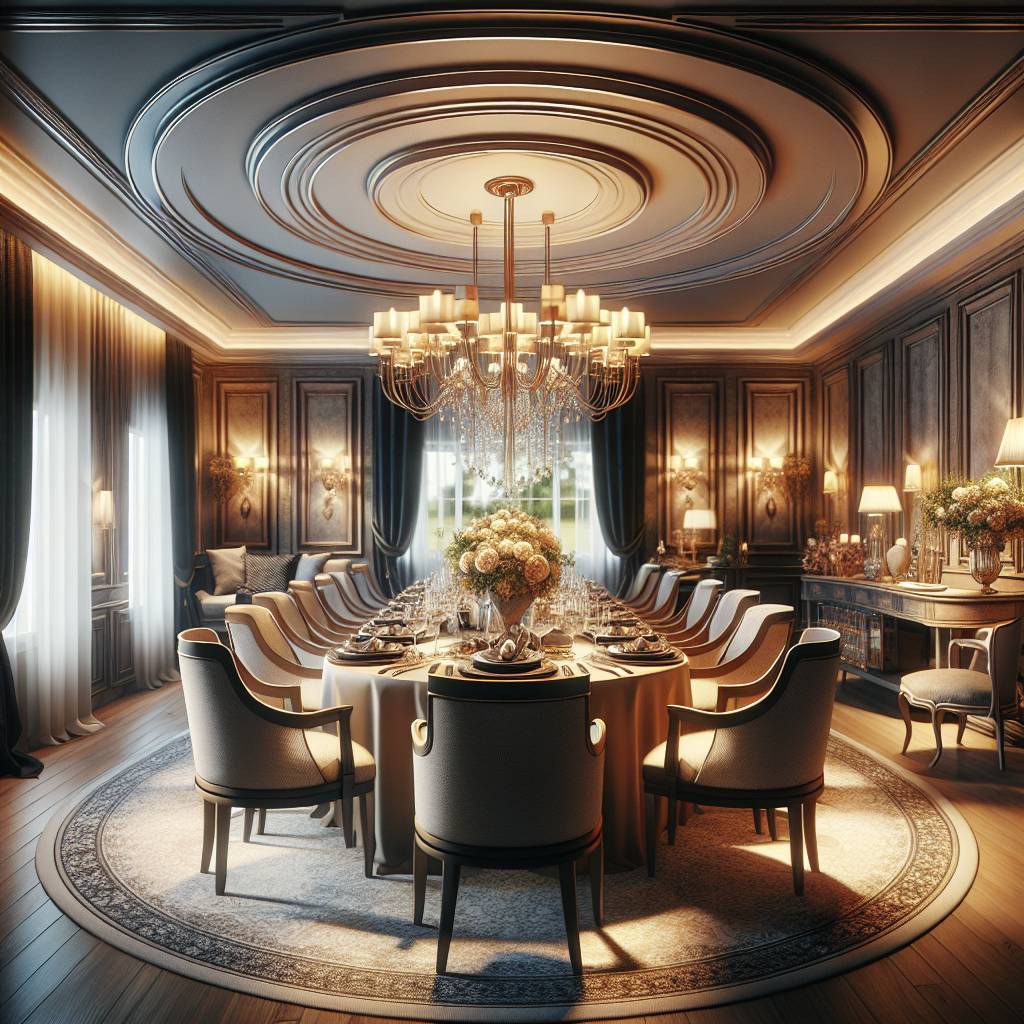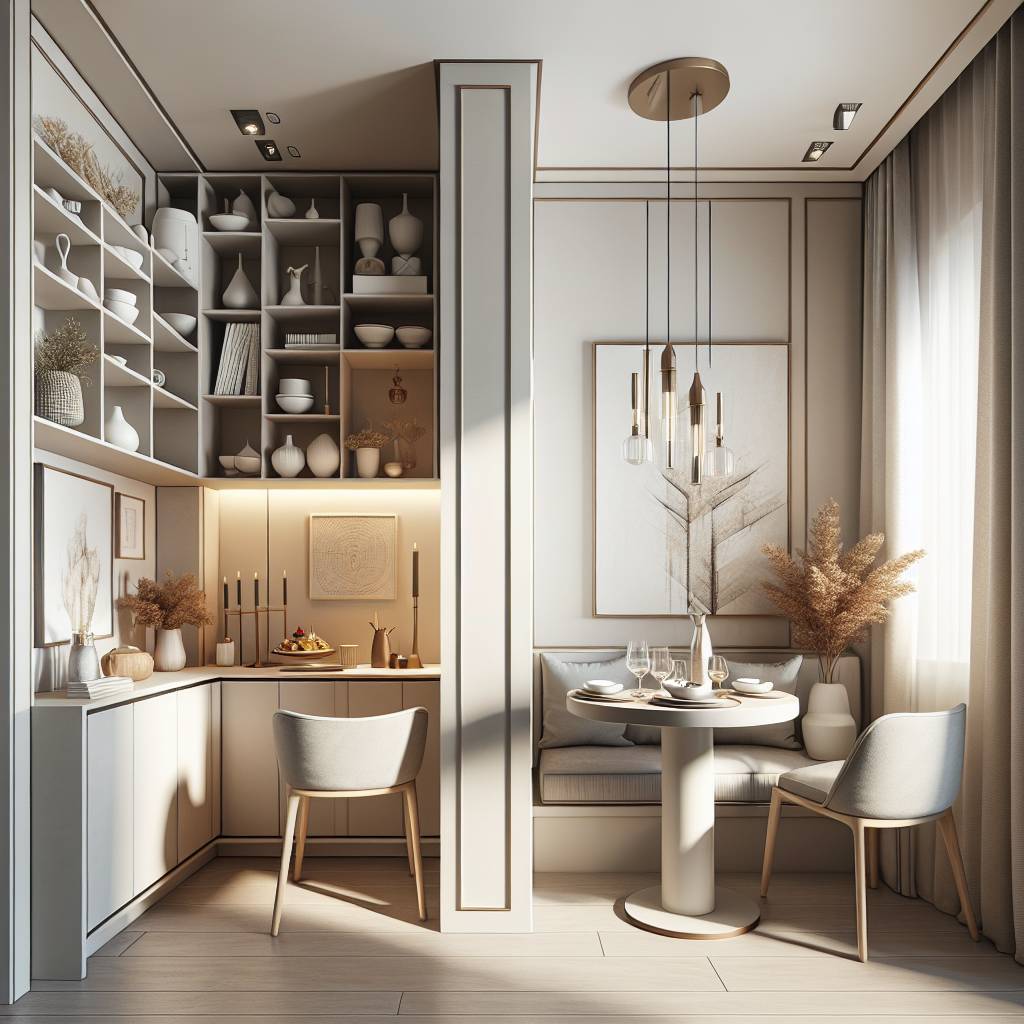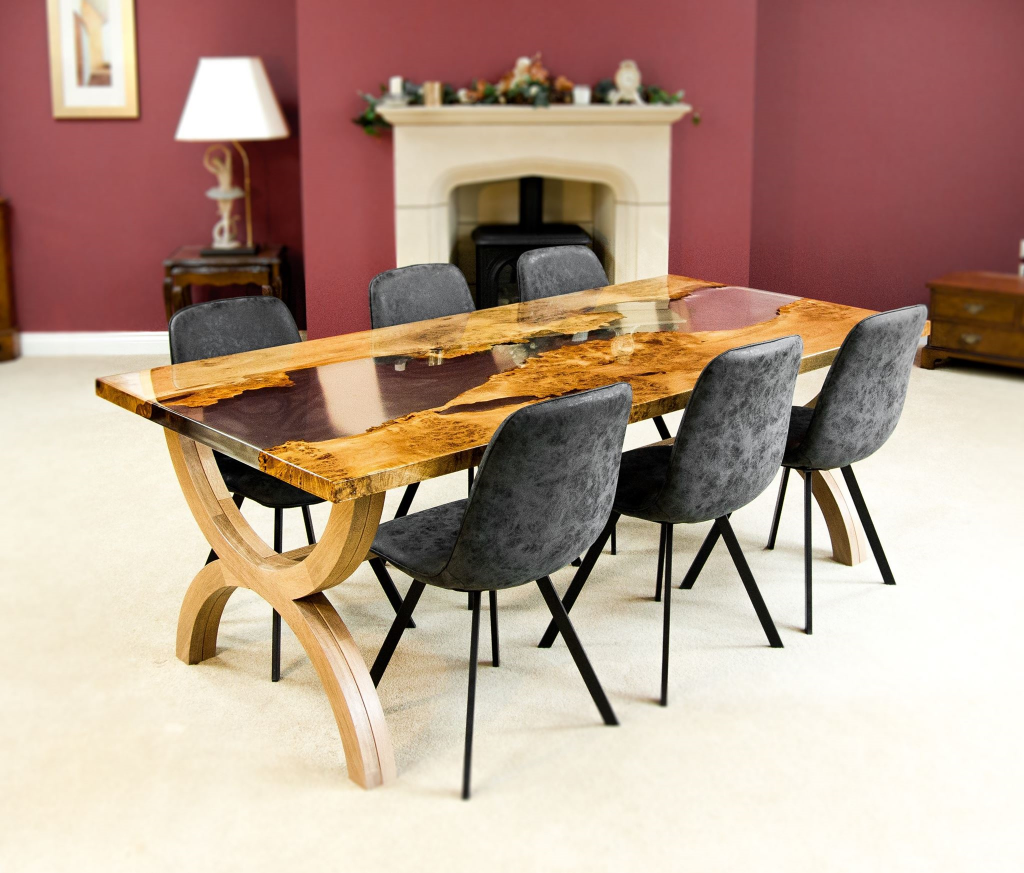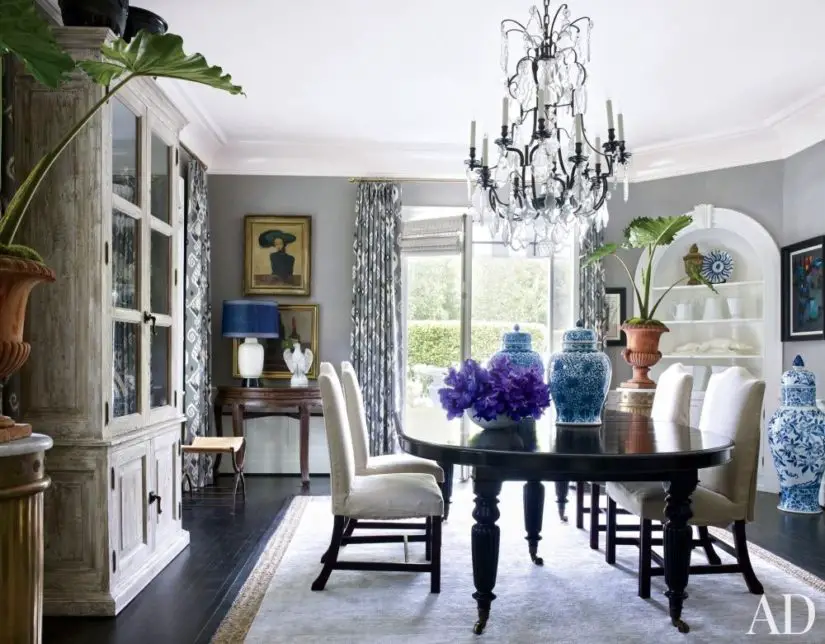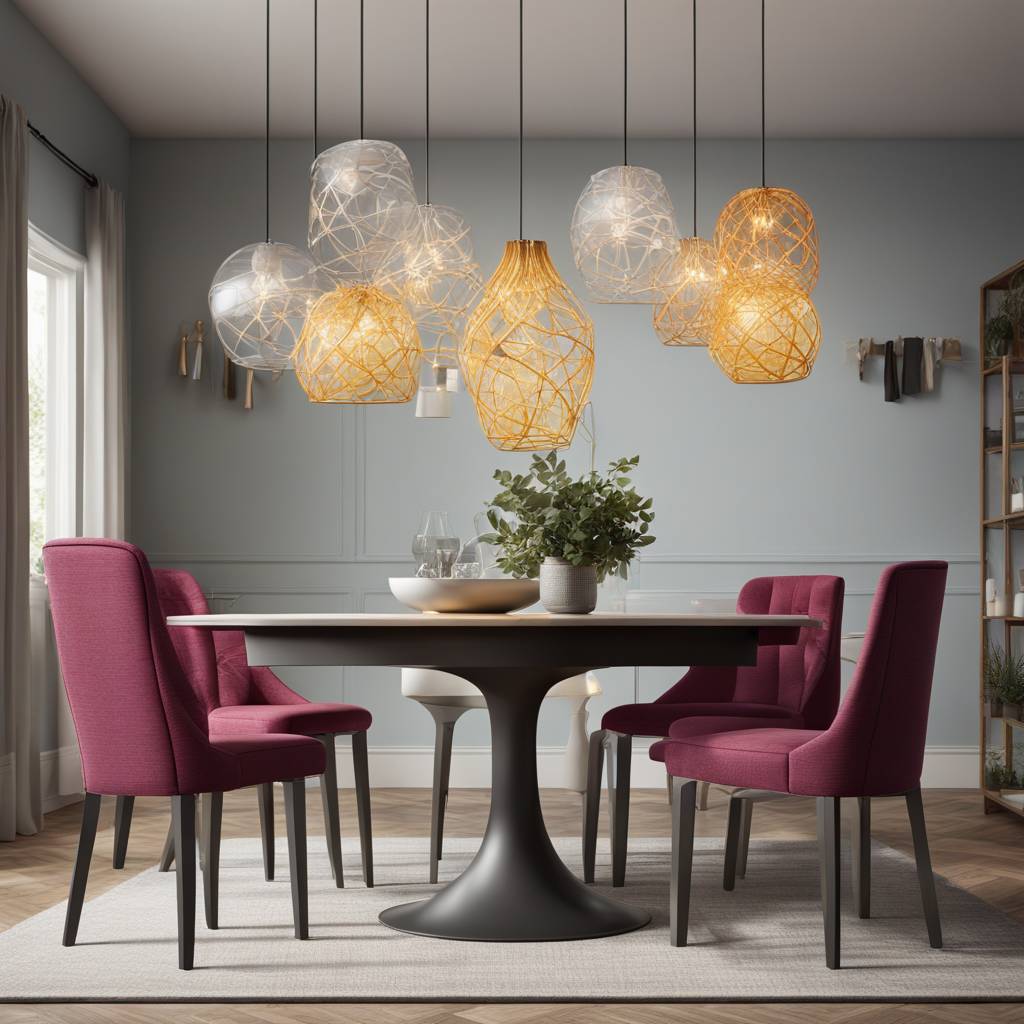Key Takeaways
- Measure your dining space carefully to ensure the table fits comfortably and allows for movement around it.
- Consider the material and style of the dining table based on your lifestyle, maintenance preferences, and aesthetic preferences.
- Choose a dining table shape that complements the room’s layout and accommodates your seating needs, whether it’s a round, rectangular, or square table.
- Prioritize functionality and comfort when selecting the ideal dining table size, ensuring ample space for both everyday use and entertaining guests.
- Coordinate the dining table with chairs that not only match aesthetically but also provide comfort and functionality for dining experiences.
- Keep in mind the importance of balance and proportion when selecting the right dining table to create a harmonious and inviting dining space.
Measuring Your Space for a Dining Table
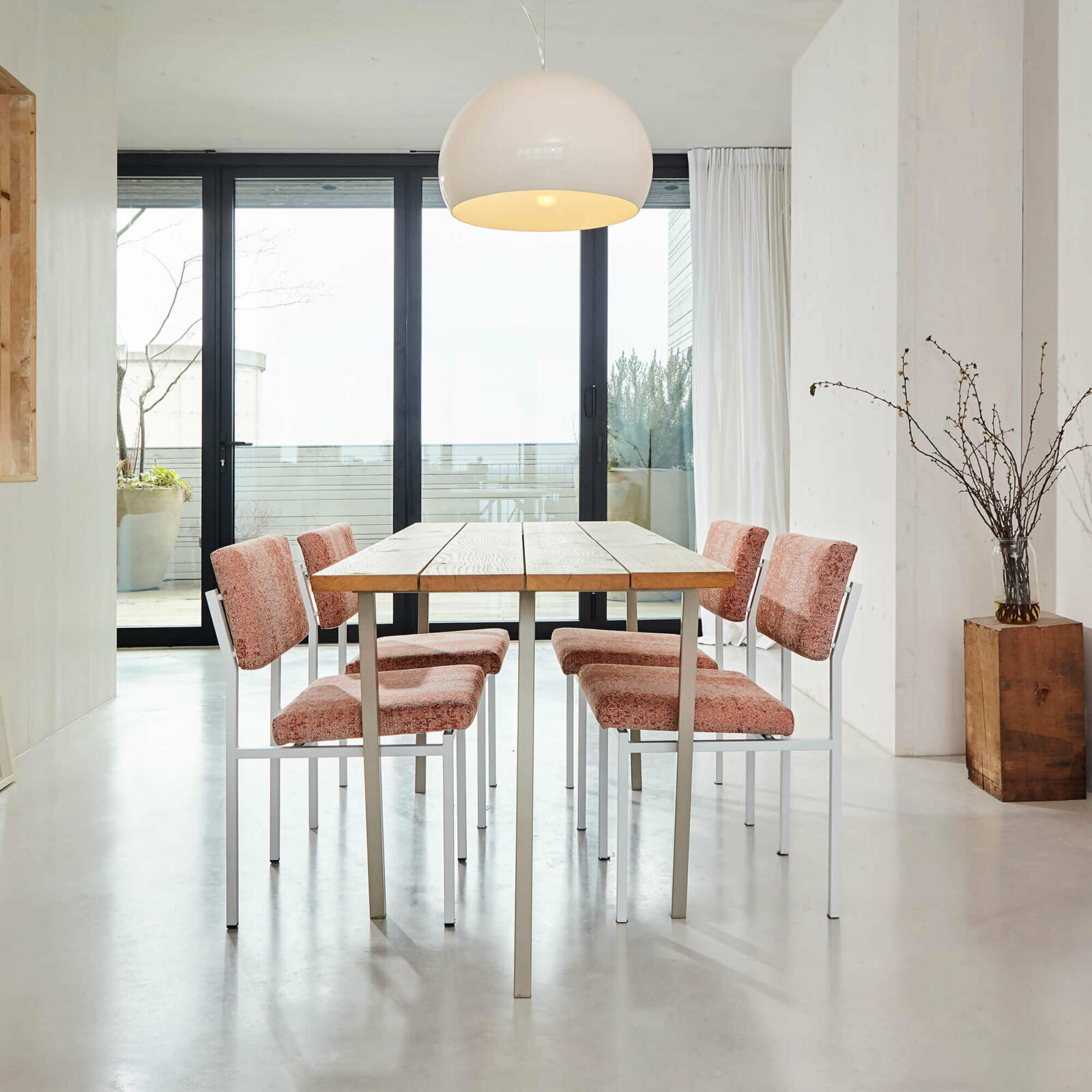
Determine Appropriate Size
When choosing the right dining room table, it’s crucial to measure your dining area for sizes of round and rectangular tables and place settings. This will help you determine the appropriate size for your table. Measure the length and width of the space to ensure that the table fits comfortably without overcrowding the room.
Consider the layout and flow of the room when measuring for a dining table. If you have a small room, opting for a smaller-sized table top piece would be more suitable. A round or square table may work better in compact spaces compared to rectangular ones, as they can fit snugly into corners or against walls.
Additional Furniture and Features
Take into account any additional furniture or features in the space that may affect the table’s placement. For instance, if there’s an overhead light fixture above where you plan to place your dining table, make sure there is enough clearance between them so that people can sit comfortably without feeling cramped.
When considering different sizes and shapes of tables, keep in mind how much space is needed around it for chairs and movement. You don’t want to end up with a beautiful new dining table that leaves no room for people to walk around it comfortably.
Assessing Space and Clearance for a Dining Table
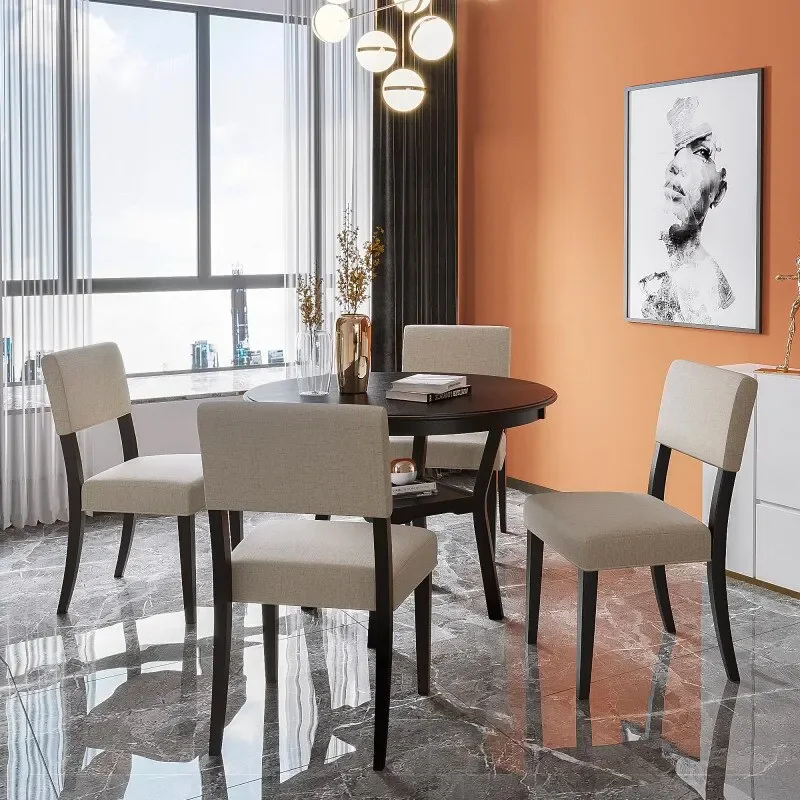
Comfortable Seating and Movement
When choosing the right dining room table, it’s crucial to assess the space available in your dining area. This includes determining the amount of space needed around the table for comfortable seating and movement. You’ll want to ensure that there is enough room for people to pull out chairs comfortably without bumping into walls or other furniture. Consider allowing at least 36 inches between the edge of the table and any walls or large pieces of furniture to allow easy access.
It’s important to consider how many people you want your dining table to accommodate regularly. For example, if you have a family of four but occasionally host larger gatherings, you may opt for a table with extendable leaves or one that can comfortably seat more people when needed. This will help ensure that everyone has enough space during meals while also providing flexibility for entertaining guests with round and oval table tops.
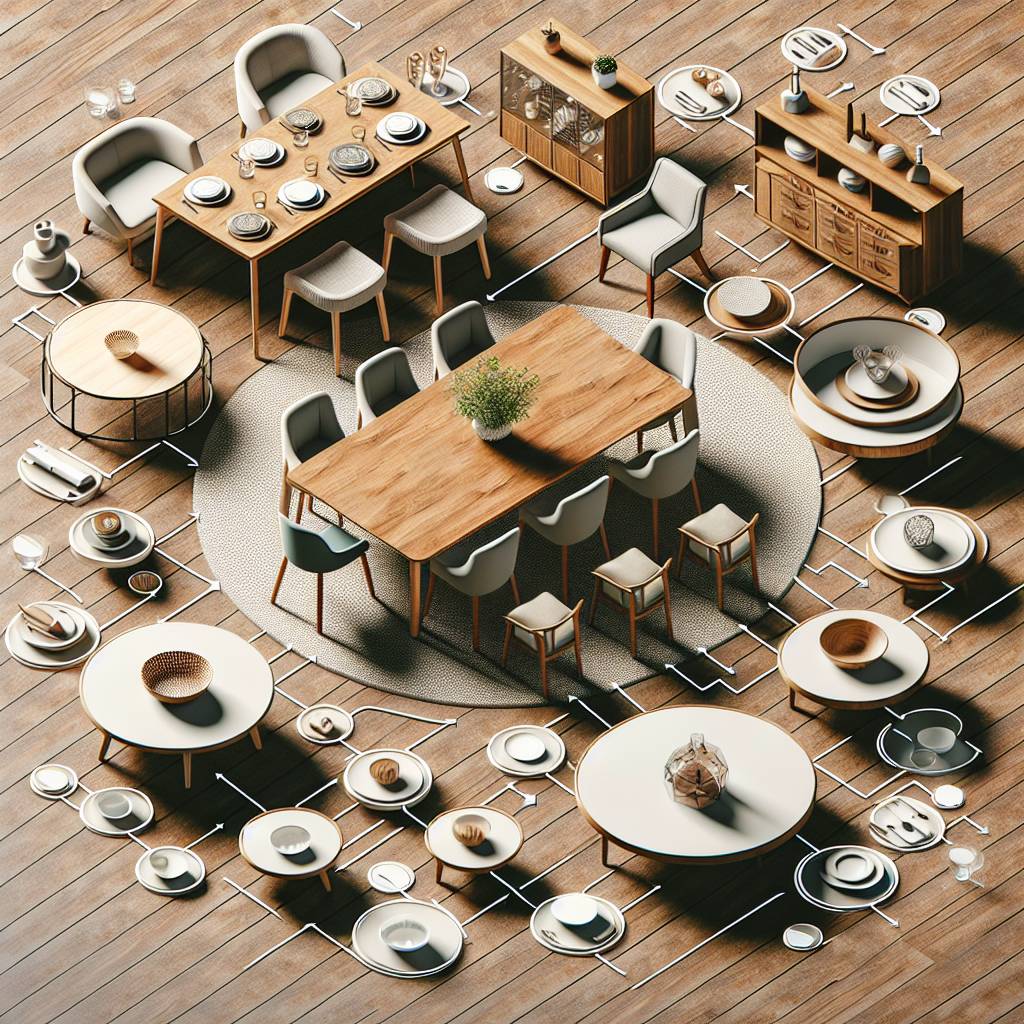
Doorways, Walkways, and Other Furniture
Another factor when assessing clearance requirements is considering doorways, walkways, and other furniture in your dining area. Take note of any potential obstructions such as light fixtures or decorative elements hanging from ceilings above where the table will be placed. These considerations are essential because they can impact not only how much space is available around the table but also how easily it can be accessed by diners.
When measuring clearance requirements, don’t forget about ensuring there’s enough room underneath the tabletop as well. This ensures that diners have ample legroom and can sit comfortably without feeling cramped under the table.
Exploring Different Dining Table Materials and Styles
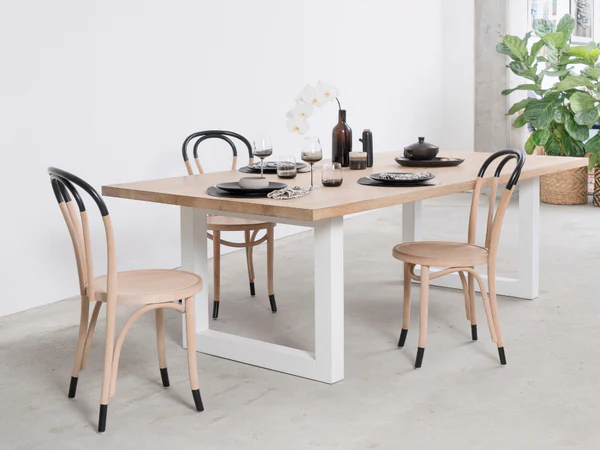
Various Materials Used in Dining Tables
You must consider different materials like wood, glass, metal, and marble. Each material offers unique characteristics that can impact the table’s durability and maintenance requirements. For instance, a solid wood dining table provides a classic look and is generally durable, while a glass table creates an illusion of space in smaller rooms.
Exploring these options will help you understand the advantages and disadvantages of each material. For example, wood veneer tables are more affordable than solid wood versions but may not be as durable. On the other hand, marble tables exude luxury but require regular maintenance to keep them looking pristine.
Consider your lifestyle when evaluating these materials; for families with young children or pets, sturdy materials like solid wood or metal might be more practical due to their resilience against scratches and spills.
Different Styles for Aesthetic Preferences
In addition to considering various materials for your new dining table, exploring different styles such as traditional, modern, rustic, or industrial is crucial in finding one that suits your aesthetic preferences. A traditional style often features intricate details and rich finishes suitable for formal dining rooms.
On the contrary, modern styles emphasize simplicity with clean lines and minimal ornamentation—a perfect fit for contemporary homes seeking a sleek look. If you prefer a cozy farmhouse feel in your dining area, then opting for a rustic-style table crafted from reclaimed wood can add warmth and charm to the space.
It’s important to note that mixing styles can create an eclectic look; however, ensuring cohesiveness within your home decor is key. For instance if you have an industrial-style kitchen with exposed brick walls and metal accents throughout the space—opting for an industrial-style trestle dining table would complement this aesthetic beautifully.
Durability And Maintenance Considerations
When buying a new dining table made from various materials such as wood or marble among others—considering its durability along with maintenance requirements is crucial. For example: A marble tabletop requires regular sealing to prevent stains while being susceptible to scratching due to its softer nature compared to other materials like glass or metal which are more resistant. Considering both durability & maintenance will help ensure that you choose not only what looks best but also what will withstand everyday use without losing its appeal over time.
Determining the Best Material for Dining Tables

Comparing Pros and Cons
Considering different materials is crucial. Each material has its own set of advantages and disadvantages. For instance, a solid wood table offers durability and a timeless aesthetic but may require more maintenance compared to other materials. On the other hand, glass tables are sleek, modern, and easy to clean but might be more prone to scratches.
It’s essential to weigh these pros and cons against your specific lifestyle needs. If you have young children or frequently host dinner parties, a scratch-resistant material like tempered glass or stainless steel could be preferable. Conversely, if you prioritize warmth and character in your dining space, a wooden table might better suit your needs.
When comparing materials such as wood, glass, metal, or marble for dining tables, consider how each one aligns with your daily habits and preferences. For example:
- Wood: Classic appeal with options like oak or walnut; requires regular maintenance.
- Glass: Modern look that’s easy to clean but can show fingerprints easily.
- Metal: Industrial vibe with excellent durability but may not offer the same warmth as wood.
- Marble: Luxurious appearance with high resistance to heat and stains; however, it can be heavy and expensive.
Considering Aesthetic Appeal
In addition to practical considerations such as durability and ease of cleaning when choosing a dining table material, it’s important to think about how each option complements your existing decor. The right material should seamlessly blend in with the overall aesthetic of your dining area while adding visual interest.
For instance: If you have a rustic-themed dining room adorned with warm tones and natural textures, opting for a wooden table would enhance this cozy ambiance further. Conversely, if your space features minimalist design elements, a sleek glass or metal table could effortlessly integrate into this modern setting.
Ultimately, the ideal choice should strike a balance between functionality and aesthetics, enhancing both your everyday living experience and the visual appeal of your home.
Choosing the Right Dining Table Shape
Different Shapes
There are various options to consider, such as rectangular, round, square, or oval tables. Each shape offers distinct advantages and impacts how people interact during meals. For instance, a rectangular table is excellent for accommodating many guests and fits well in long dining rooms.
Consideration should also be given to a square table’s ability to facilitate intimate conversations due to its equal sides. On the other hand, round tables promote inclusivity by allowing everyone to see each other and converse easily. Lastly, an oval table combines the best of both rectangular and round shapes by offering ample seating while maintaining a sense of intimacy.
Seating Capacity and Interaction
The choice of a dining table shape significantly affects its seating capacity and interaction dynamics during meals. A large family might benefit from a spacious rectangular table that can comfortably accommodate multiple chairs on each side. This setup encourages lively discussions across the length of the table.
Conversely, if fostering close interactions among diners is a priority, then opting for a round or oval shape could be more suitable. These shapes allow everyone seated around them to engage in eye contact without anyone feeling left out at far ends like with some rectangular or square tables.
Considering Needs Before Settling on Table Shape
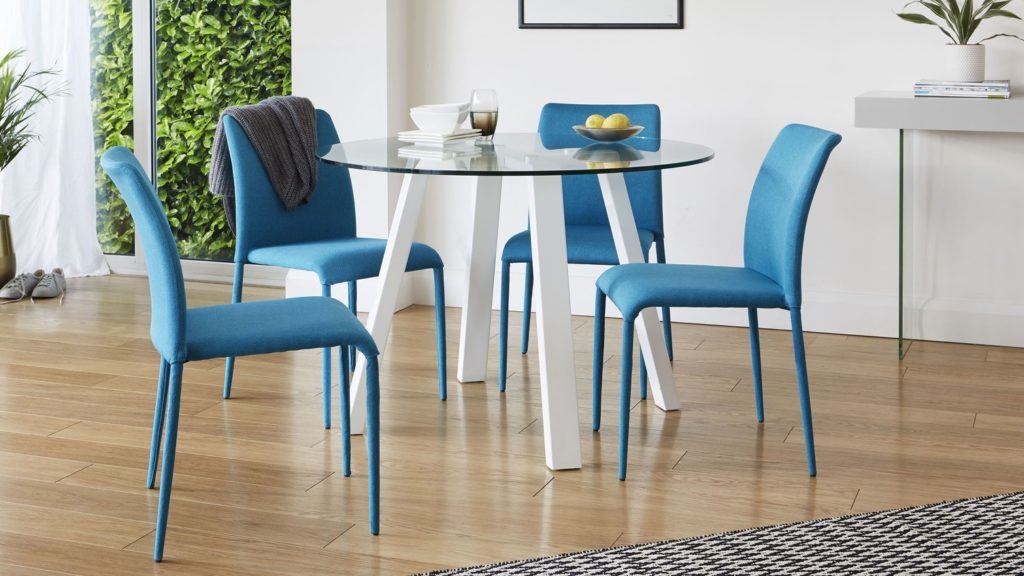
Specific Seating Preferences
Before settling on a dining room table shape, it’s essential to consider your specific seating needs and preferences. Do you prefer intimate gatherings or larger dinner parties? This preference will influence the shape of the table that best suits your needs. For example, if you enjoy hosting large family dinners or frequent social gatherings, a rectangular or oval-shaped table might be more suitable as they offer ample seating space.
Understanding how you typically use your dining area is crucial in determining the right table shape for your home. If you often entertain guests and need extra seating capacity, an extendable table could be a practical choice. On the other hand, if your dining area is primarily used for small family meals, a round or square table may suffice.
Consider whether you prefer intimate gatherings or larger dinner parties when deciding on a shape. Take into account the number of people you usually entertain and how often you use the dining table.
Functional Considerations
Apart from personal preferences and entertaining habits, functional considerations also play a significant role in choosing the right dining room table shape. For instance, if space is limited in your dining area, opting for a round or square table can help maximize available space while maintaining functionality. These shapes are ideal for creating an intimate setting and facilitate smooth traffic flow around them.
In addition to considering available space, think about how versatile you want your dining room to be. A rectangular or oval-shaped table provides flexibility for various uses beyond meal times; they can double as workspaces or craft tables due to their elongated design.
- Round/square tables maximize available space.
- Rectangular/oval tables offer versatility beyond meal times.
Selecting the Perfect Dining Table Style
Determine Your Preferred Style
When choosing a dining room table, it’s crucial to consider your preferred style. Whether you lean towards traditional, contemporary, minimalist, or eclectic designs, your dining table should reflect this aesthetic. For instance, if you have a modern and sleek dining room, a glass-topped table with clean lines might be an ideal choice. On the other hand, if your space exudes warmth and classic charm, a wooden farmhouse-style table could be more fitting.
Consider how the chosen style will harmonize with the existing decor in your home. If you have a formal dining room with elegant furnishings and intricate details, opt for a sophisticated table that complements this ambiance. Conversely, if your space is more casual and relaxed, explore options that align with this laid-back vibe.
Explore Different Design Elements
As you delve into selecting the right dining table style for your home, take time to explore various design elements such as legs, finishes, and details. The shape of the legs can significantly impact the overall look of the table — from ornate pedestal bases to sleek tapered legs; there are numerous options to choose from based on personal preference.
Additionally,dining tables come in diverse finishes like natural wood tones or painted surfaces in varying colors. These finishes play an essential role in defining the overall aesthetic of your dining room. Furthermore,options like carved details on edges or unique tabletop shapes add character and personality to the piece.
Tips for Choosing the Ideal Dining Table Size
Consider Seating Capacity
When deciding on the right dining room table, it’s crucial to consider the number of people you typically accommodate during meals. A good rule of thumb is to ensure that each person has about 24 inches of space at the table. For example, if you usually host a family of four, a round or square table with a diameter or width of 48 inches would provide ample space for comfortable dining.
It’s also essential to think about any potential changes in your household size or entertaining needs. If there’s a possibility that your family might grow in the future, opting for an extendable table could be a wise choice. This way, you can adjust the size as needed when hosting larger gatherings without having to invest in an entirely new dining set.
Space and Movement
Another critical factor when selecting a dining room table is ensuring there is enough space for comfortable seating and movement around it. Be mindful not only of how much physical space the table occupies but also how much clearance is needed around it for chairs and people moving through the area.
For instance, if your dining area has limited space, consider choosing a pedestal or trestle base rather than legs at each corner. These bases allow more flexibility in seating arrangement and legroom while maximizing available floor space. Keep in mind that chairs need ample room to be pulled out comfortably without bumping into walls or other furniture.
Matching Chairs with Your Dining Table
Consider the Height and Style of Your Dining Table
When choosing chairs for your dining table, it’s crucial to consider the height and style of the table. For a cohesive look, ensure that the chairs are at an appropriate height in relation to the table. If you have a standard-height dining table, opt for chairs with a seat height that allows for comfortable seating and easy movement. On the other hand, if you have a counter-height or bar-height table, select taller chairs to match.
In terms of style, aim to choose chairs that complement the design aesthetic of your dining table. If your table has a modern or minimalist design, consider sleek and simple chair designs to maintain visual harmony. Conversely, if your table features intricate details or traditional elements, opt for chairs with similar characteristics to create a unified look.
To illustrate this point further: imagine having an elegant glass-top dining table; pairing it with contemporary leather-upholstered chairs can enhance its modern appeal while maintaining visual balance.
Match Material and Finish for Coordinated Aesthetic
Another essential factor when selecting dining room chairs is ensuring that their material and finish align with those of the table. Whether your dining table is crafted from wood, metal, glass or any other material type – matching this aspect will contribute significantly to achieving a coordinated aesthetic in your space.
For instance: if you have a wooden dining table, opting for wooden or upholstered chairs featuring wood accents can establish an appealing sense of unity within the overall decor scheme. Similarly, if your dining room features metallic elements such as steel legs on the table, coordinating this by choosing metal-framed chairs can elevate cohesiveness in design throughout the space.
Prioritize Comfort and Functionality
While aesthetics are important when selecting complementary furniture pieces like chairs, comfort and functionality should not be overlooked either. Ensure that chosen chairs provide adequate support during extended meals as well as versatility for various activities beyond eating – such as working or socializing around the dining area.
Consider padded seats or cushioned backrests which offer enhanced comfort during extended use; also contemplate armrests which can add extra support especially suitable for long dinners where people tend to linger at the dinner tables. Additionally prioritize functionality by choosing stackable options if space efficiency is necessary.
Frequently Asked Questions
How do I measure my space for a dining table?
To measure your space, start by determining the available length and width. Leave at least 36 inches of clearance around all sides of the table for comfortable seating.
What is the best material for dining tables?
Solid wood, glass, and metal are popular choices. Solid wood offers durability and timeless appeal, while glass creates a modern look. Metal provides strength and sleek design options.
How do I choose the right dining table shape?
Consider your room’s layout and personal preferences. Rectangular tables work well in most spaces, while round tables promote conversation. Square tables suit smaller areas.
What size should my ideal dining table be?
A general rule is to allow 24 inches of width per person along with some extra space in the middle for serving dishes or decor. For example, a 6-seater table should be around 72 inches long.
How can I match chairs with my dining table?
Select chairs that complement your table’s style without overpowering it. Mix materials like upholstered chairs with a wooden table or opt for matching sets to create a cohesive look.
